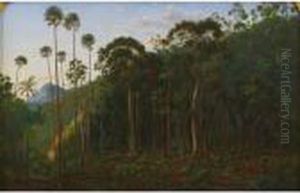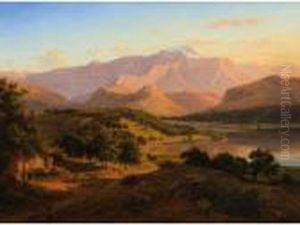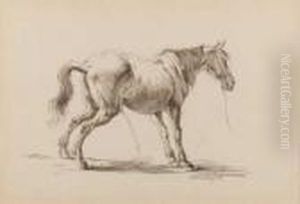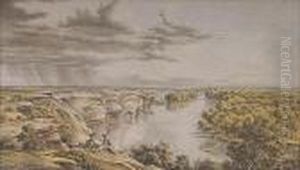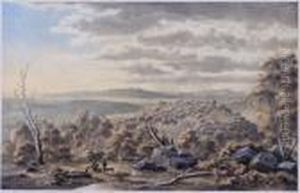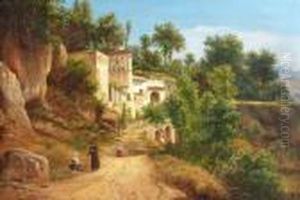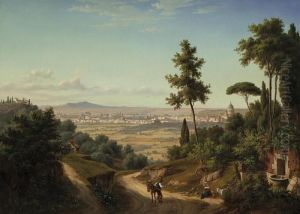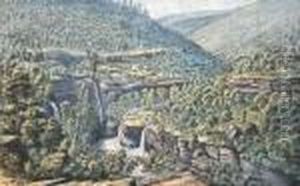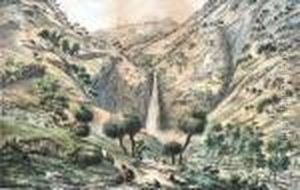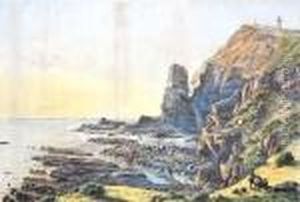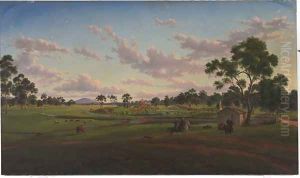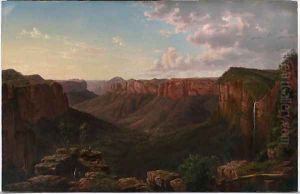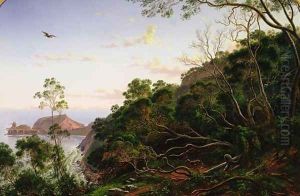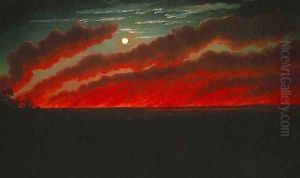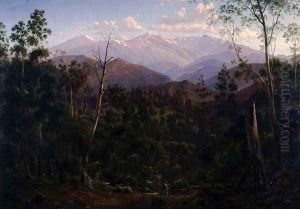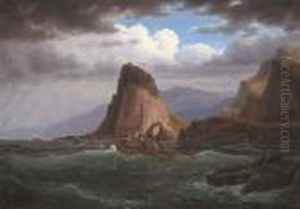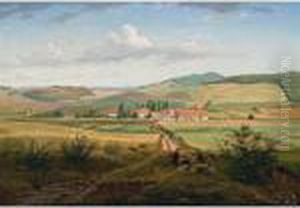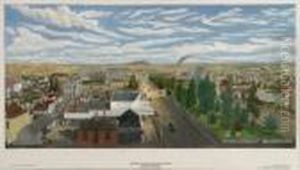Eugene von Guerard Paintings
Eugene von Guerard was an Austrian-born artist known for his fine detailed landscapes, particularly those documenting the diverse landscapes of Australia. Born Johann Joseph Eugen von Guérard on November 17, 1811, in Vienna, Austria, he was the son of a court painter at the court of Francis I of Austria. His artistic education began in Italy, where he studied art at the Academy of Fine Arts in Rome under renowned neoclassical landscape painter Giovanni Thomas Lorenzon.
After spending time in Italy, von Guerard traveled extensively through Europe, honing his skills and drawing inspiration from the Old Masters. In 1838, he moved to Germany and worked in Düsseldorf, an important art center at the time, and later to Frankfurt.
In 1852, von Guerard migrated to Victoria, Australia, during the gold rush, hoping to strike it rich. However, he soon turned to what he knew best—painting—and within a few years, he became one of Australia’s most important artists. His works from this period are characterized by meticulous attention to detail, an aspect that has been attributed to the influence of the Düsseldorf school of painting.
Von Guerard’s paintings often depict the Australian landscape in a romantic light, with a strong emphasis on the sublime and majestic aspects of nature. His works were instrumental in shaping the way 19th century European audiences perceived the Australian environment. Some of his most notable works include 'View of Geelong' (1856) and 'Northeast View from the Northern Top of Mount Kosciusko' (1863).
In addition to his landscape paintings, von Guerard also held the position of the first Master of the School of Painting at the National Gallery of Victoria, where he had a significant influence on the development of Australian art education.
Eugene von Guerard's career in Australia spanned two decades, after which his popularity began to wane with the rise of the Australian Impressionists, who favored a looser, more spontaneous style of painting. He returned to Europe in 1882, and his later years were spent in England and on the continent, where he continued to paint but never regained the prominence he had enjoyed in Australia. He died on April 17, 1901, in London, England.

